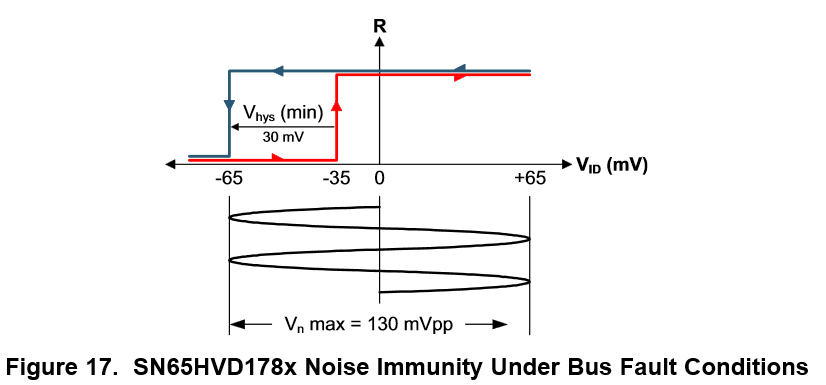I have an application whereby an MCU is controlling a SN65HVD1780 on a RS485 network bus with another device. The DE and ~RE lines are connected together and they are controlled by the MCU. It appears that after a transmission has completed and the MCU transitions the DE/~RE lines low that the Receive line transitions from high to low prematurely causing the UART on my MCU to thank it has received a start bit which causes a framing error. It’s as if the Fail Safe Receiver for Idle-Bus Conditions is not keeping the state of the receive output line in the high state until the other controller can drive the differential lines to respond to the transmission.
Have you ever seen this before?
Are you aware of any issues with driving the DE and ~RE lines of the SN65HVD1780 together without a pull down resistor connected to the lines?



